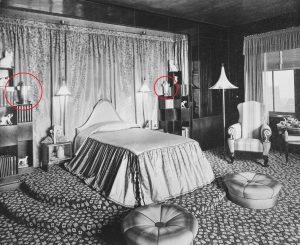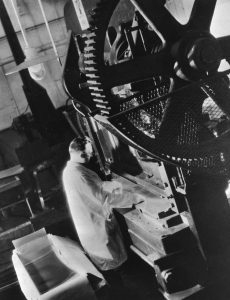Much as people today are aware of the internet shaping their daily lives, Americans in the 1920s and ‘30s noted the strong influence of machines on society. After World War I, the U.S. entered a period of rapid technological and industrial development. Ford Motor Company’s innovation of the assembly line in the early 1910s made automobiles more affordable; by 1930, over half of American households owned a car. Radios, airplanes, ocean liners, and cars compressed both space and time and became emblems of the era’s fascination with speed. Aerodynamic forms inspired the clean lines of modernism, evident in the pair of zeppelin-shaped urns depicted in Elaine’s bedroom.

Refinements in the production of materials such as plastics and aluminum encouraged their use in the manufacture of goods that were cheaper to produce and available at lower price points. Yet the modern materials, such as Pyralin and Vitrolite, that Joseph Urban used in Elaine’s bedroom did not imply cheapness, but rather the possibilities of technological progress.
